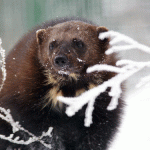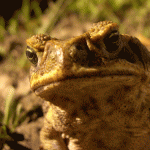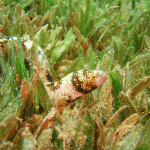
The 'Abel Tasman' could start fishing for jack mackerel and redbait in Australian waters. Image: Shutterstock
What do history and science tell us about the impacts of trawling.
The arrival of the controversial 142 metre-long Dutch super trawler Abel Tasman (previously named Margiris) on Australian shores has caused a wave of heated protest and opposition around the country. The vessel, which is capable of catching 250 tonnes of fish a day, docked at Port Lincoln, South Australia, on 30th August and is set to fish for jack mackerel and red bait in the waters stretching from New South Wales to Western Australia for Seafish Tasmania.
The major problems cited by concerned scientists, local fishermen and conservationists is that sea trawling is a non-selective fishing method that allows the capture of millions of marine organisms by dragging a net (large enough to hold 13 jumbo jets) through the ocean. It is feared that the super trawler could have devastating effects on marine ecosystems by overfishing and causing widespread depletion of species low in the food chain. With ferocious debates between the large fishing companies, the Australian government and conservationists, it is the right time for people to get to know more about how the massive vessel will operate and whether super trawlers are unquestionably destructive or, with rigid conditions, have the potential to fish in a sustainable manner.
The ship in question
The trawler will catch fish in an area known as the Small Pelagic Fishery by towing its 300-metre-long net along the bottom and the mid-waters of the ocean. Any marine animals that find themselves in the wrong place at the wrong time — that is, in front of the net’s 80 metre by 35 metre opening — will be sucked up onto the ship through a pipe and into an on-board fish factory where they automatically get sorted, packed and frozen. The small, low-value fish the trawler will target are not very popular in the Australian market (besides being used in manufactured animal feed), so after they are caught they will be exported to West Africa for human consumption.
Quota based on sound science?
The world’s second largest trawler previously fished the waters off the West African coast, but now most commercial fish stocks in the area have become widely depleted. In Australian waters the same ship is likely to capture 18,000 tonnes of baitfish in the Tasman Sea, which according to the company that brought it to Australia, is a sustainable quantity based on “sound science”. Some scientists see the vessel’s arrival as an opportunity for Australian Fisheries. James Cook University professor Mike Kingsford said: “Unlike many other parts of the world our catches of small plankton-feeding fishes is small”¦ It is completely reasonable to explore these new stocks, so long as it is backed by good science — most sensibly in collaboration with the industry.”
The key question is whether the data is reliable. Jessica Meeuing from the Oceans Institute at University of Western Australia (UWS) doesn’t think the science is strong enough to support super trawling in Australian waters. “We are mislabelling, and thus misunderstanding, the target species”¦ Our population estimates are highly uncertain”¦ The estimates are generally based on old information, inferred from other species. It is likely that biomass estimates (and thus associated quotas) are much more uncertain than is currently reported,” said Meeuing.
A group of Spanish researchers have recently shown that trawling not only affects ocean life but also modifies the physical properties of sea-floor sediments. “Our results suggest that in recent decades, following the industrialisation of fishing fleets, bottom trawling has become an important driver of deep seascape evolution,” explain the researchers in their paper published in Nature. “We anticipate that the morphology of the upper continental slope in many parts of the world’s oceans could be altered by intensive bottom trawling, producing comparable effects on the deep sea floor to those generated by agricultural ploughing on land.”
The excluder hatch feature
Although the Dutch vessel will be targeting just two types of fish, it is a well-known fact that super trawlers don’t discriminate when it comes to catching marine creatures. In the past, by-catch has commonly included dolphins, seals, birds and sea lions as well as other fish and cephalopod species. Seafish Tasmania says that the net of Abel Tasman is fitted with an excluder feature that minimises the unintentional capture of larger sea animals by guiding them to an escape hatch. Exit hatches on other ships have had mixed reviews by researchers: some have been shown to be effective but other studies have found that dolphins are often unable to find the exit in time. To date, no trials have been conducted on the Abel Tasman excluder device.
The big vessel will have to fish like a small vessel
The super trawler was given the go ahead by Environmental Minister Tony Burke with a strict set of rules it’s owners must agree to follow. “They have to have our monitors on board 24 hours [a day], they also have to have a camera within the net that has to be fully monitored every day, and they have to send back any interceptions,” said Burke on ABCs Q & A program on 5th September. “The big vessel will have to fish [within] the rules so that the impact it has on the environment is no more than if it’s fishing like a small vessel.” Considering the sheer size and capabilities of the ship, is this like asking a Doberman to behave like a Chiwawa?






